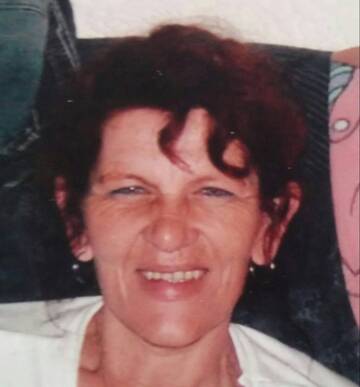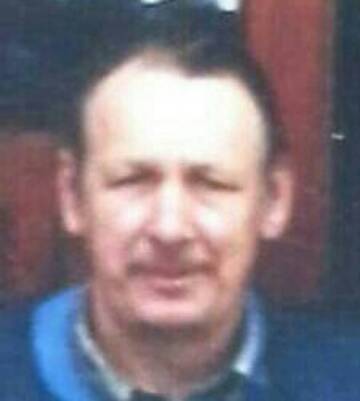Family tree Jager en Dijkstra 2 » Olga Bernardina van Oyen (1950-2019)
Personal data Olga Bernardina van Oyen
- She was born on April 27, 1950 in Velsen, North Holland, Netherlands.
- She died on October 11, 2019 in Haarlem, North Holland, Netherlands, she was 69 years old.
- This information was last updated on August 5, 2025.
Household of Olga Bernardina van Oyen
She is married to Jan de Jong.
They got married.
Child(ren):
Image(s) Olga Bernardina van Oyen
Ancestors (and descendant) of Olga Bernardina van Oyen
Olga Bernardina van Oyen  | ||||||||||||||||||||||||||||||||||
Jan de Jong | ||||||||||||||||||||||||||||||||||
The data shown has no sources.
Historical events
Birthday April 27, 1950
- The temperature on April 27, 1950 was between 2.1 °C and 9.0 °C and averaged 5.2 °C. There was 4.2 mm of rain during 5.0 hours. There was 2.6 hours of sunshine (18%). The average windspeed was 4 Bft (moderate breeze) and was prevailing from the west-northwest. Source: KNMI
- Koningin Juliana (Huis van Oranje-Nassau) was from September 4, 1948 till April 30, 1980 sovereign of the Netherlands (also known as Koninkrijk der Nederlanden)
- From August 7, 1948 till March 15, 1951 the Netherlands had a cabinet Drees - Van Schaik with the prime ministers Dr. W. Drees (PvdA) and Mr. J.R.H. van Schaik (KVP).
- In the year 1950: Source: Wikipedia
- The Netherlands had about 10.0 million citizens.
- January 5 » In the Sverdlovsk air disaster, all 19 of those on board are killed, including almost the entire national ice hockey team (VVS Moscow) of the Soviet Air Force – 11 players, as well as a team doctor and a masseur.
- January 13 » British submarine HMSTruculent collides with an oil tanker in the Thames Estuary, killing 64 men.
- March 17 » Researchers at the University of California, Berkeley announce the creation of element 98, which they name "californium".
- April 8 » India and Pakistan sign the Liaquat–Nehru Pact.
- June 28 » Korean War: Packed with its own refugees fleeing Seoul and leaving their 5th Division stranded, South Korean forces blow up the Hangang Bridge in an attempt to slow North Korea's offensive. The city falls later that day.
- November 5 » Korean War: British and Australian forces from the 27th British Commonwealth Brigade successfully halted the advancing Chinese 117th Division during the Battle of Pakchon.
Same birth/death day
- 1948 » Frank Abagnale Jr., American security consultant and criminal
- 1948 » Josef Hickersberger, Austrian footballer, coach, and manager
- 1949 » Grant Chapman, Australian businessman and politician
- 1950 » Jaime Fresnedi, Filipino politician
- 1950 » Paul Lockyer, Australian journalist († 2011)
- 1951 » Ace Frehley, American guitarist and songwriter
- 2014 » Anita Cerquetti, Italian soprano (b. 1931)
- 2014 » Carmelo Simeone, Argentinian footballer (b. 1933)
- 2015 » Dean Chance, American baseball player and manager (b. 1941)
- 2015 » Jack Drake, American lawyer and politician (b. 1934)
- 2017 » Clifford Husbands, Barbadian politician (b. 1926)
- 2019 » Alexei Leonov, Soviet/Russian cosmonaut and first human to conduct a spacewalk (b. 1934)
About the surname Van Oyen
- View the information that Genealogie Online has about the surname Van Oyen.
- Check the information Open Archives has about Van Oyen.
- Check the Wie (onder)zoekt wie? register to see who is (re)searching Van Oyen.
The Family tree Jager en Dijkstra 2 publication was prepared by Sjoerd Jager.
When copying data from this family tree, please include a reference to the origin:
Sjoerd Jager, "Family tree Jager en Dijkstra 2", database, Genealogy Online (https://www.genealogieonline.nl/stamboom-jager-en-dijkstra-2/I519710.php : accessed August 5, 2025), "Olga Bernardina van Oyen (1950-2019)".
Sjoerd Jager, "Family tree Jager en Dijkstra 2", database, Genealogy Online (https://www.genealogieonline.nl/stamboom-jager-en-dijkstra-2/I519710.php : accessed August 5, 2025), "Olga Bernardina van Oyen (1950-2019)".

